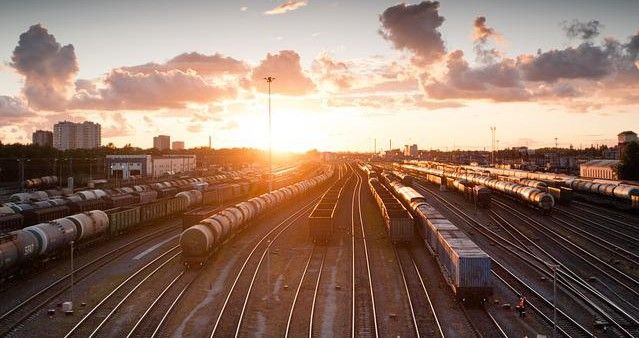As suppliers and purchasers attempt to recover from the initial shock of the Russian invasion of Ukraine, it is becoming apparent that some supply chains have been disrupted more than others.
With the war now dragging on and talk of the Russian army now planning for a campaign that will stretch into months or even years, it is necessary to look at which materials, industrial chemicals, and manufacturing sectors will be most affected if a peaceful solution cannot be found soon.
Food
One well established fact is that Russia and Ukraine are both major supplies of food for the rest of the world. For example, their combined production accounts for 29% of the world’s wheat market and 17% of the global corn market.
Price rises are therefore expected for basic foodstuffs, such as bread and pasta, but as corn is a common raw material for animal feed the war is likely to also increase costs for meat.
Additionally, Ukraine is a leading supplier (top five globally) of sunflower oil, barley, potatoes, and rye, producing enough food to feed 600 million people.
Multiple news agencies are even reporting how Russia is now ‘stealing’ grain and other agricultural supplies and equipment from Ukraine and shipping it home.
Oleg Nivievskyi, an agrarian specialist at the Kyiv School of Economics, told CNN that “on the eve of the invasion 6 million tons of wheat and 15 million tons of corn were ready for export from Ukraine, much of it held in the south of the country.”
By May 5th, the Ukrainian Defence Ministry had estimated that as much as 400,000 tons of grain had already been stolen.

Agrichemicals
Ukraine is also a key exporter of farm input materials. For example, Ukraine is Europe’s largest producer of ammonia, 80% of which is used to make fertilizer.
This situation is exacerbated by the fact that Russia is the clear substitute supplier contributing 24% of the global ammonia market, as well as providing numerous other fertilizer raw materials, such as phosphate and urea (17% of global supply).
Russia also supplies 20% of the world’s potash, with another 21% provided by Belarus, which is also subject to trade sanctions with the West. This has resulted in a sharp increase in raw material expenditure, forcing ICIS to project a 43% rise in fertilizer costs lasting into 2023.
This is further hampering the food supply chain. As Susan Mair, Senior Analyst for Healthcare & Chemicals at SustainAlytics, reports, “The impact of elevated fertilizer costs is reduced demand (projected to decrease between 5 to 15%) and consequently yield loss as farmers will use less of the product.”

Logistics
One of the least obvious repercussions from the fighting in Ukraine is the impact it is having on logistics across the wider region.
Even before the war began, maritime traffic through the Black Sea was already lower than previous years as tension in the area grew. With fighting now relatively close to the large container port of Odessa and following the sinking and continued threat to Russian military vessels, the risks are high for using this route.
While most goods are transported by ship, the last 10 years has seen 50,000 trains deliver supplies and manufactured products on the intercontinental rail link which was constructed in 2011. Now rail freight in the region is also lower as the regular East/West corridor linking China to Europe via Moscow is liable for sanction inspections.

Ores and Mineral Reserves
Ukraine has a wealth of metal ores and natural reserves and is the world’s 8th largest exporter of ores and concentrates. Among other raw materials, these include:
· Europe’s largest proven reserves of recoverable uranium
· Europe’s second largest reserves of titanium ore
· 2.3 billion tons of manganese ores (12% of global total)
· 30 billion tons of iron ore reserves (the world’s second largest)
· Europe’s second largest reserves of mercury ores
· Fourth largest exporter of clay in the world
Ukraine also is also the source for more than 90% of the U.S.’s semiconductor-grade neon, a gas which is vital to the lasers used in making microchips.
The supply chain for dozens of other metals and raw materials are also being limited by the war, causing serious disruption for manufacturers in the West. As a recent report by Deloitte notes, “Russia is a significant source of many of the 35 critical minerals that the US Department of the Interior (DOI) deems vital to the nation’s economic and national security interests,” notes “Including 30% of the globe’s supply of platinum-group elements (including palladium), 13% of titanium, and 11% of nickel.”

This list is far from conclusive, and notably has not included the threat to Europe’s energy supplies which for now remain open.
The war has brought rapid change to numerous markets as the global economy adapts to this highly uncertain situation. Suppliers of raw materials are having to work harder and harder to provide manufacturers with the products they need. Such is the depth of this crisis, that economists are now viewing the Russian invasion of Ukraine on February 24th, 2022, as a watershed moment in the history global economy.
As Ira Kalish, Deloitte’s Chief Global Economist concludes, “We are witnessing a disruption of supply chains for some commodities and increased stress in global financial markets. The war raises questions about the continuation of globalization and about the ability of any country to act against the wishes of the international community with impunity.”
Photo credit: Khusen Rustamov from Pixabay, Fancycrave1, Andreas Gollner, Franck Barske, & Pexels